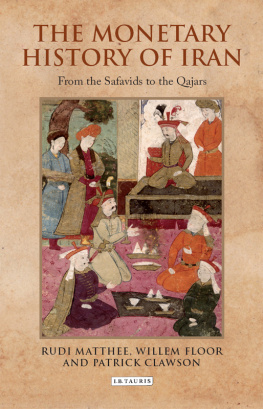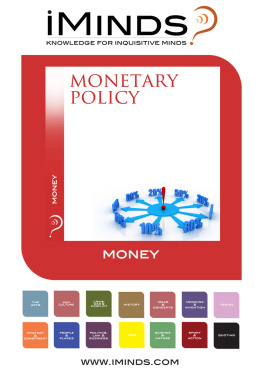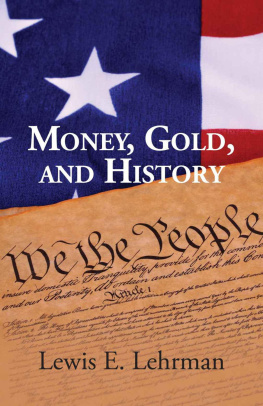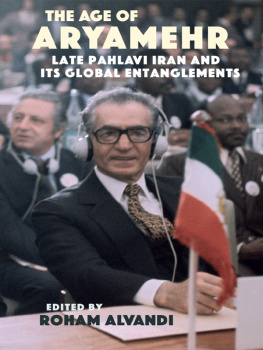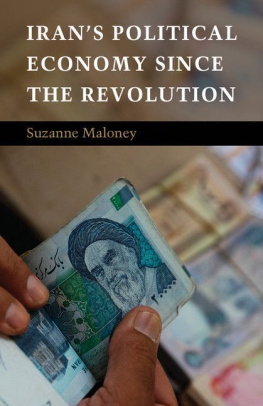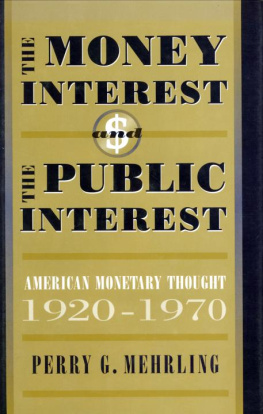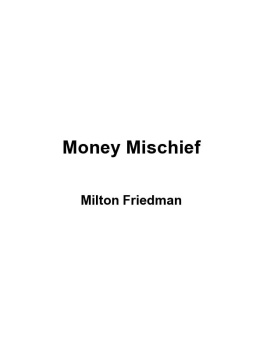
Rudi Matthee is John and Dorothy Munroe Professor of Middle East History at the University of Delaware. He is the author of Persia in Crisis: Safavid Decline and the Fall of Isfahan (I.B.Tauris, 2012); The Pursuit of Pleasure: Drugs and Stimulants in Iranian History, 15001900 (Princeton University Press, 2005); and The Politics of Trade in Safavid Iran: Silk for Silver, 16001730 (Cambridge University Press, 1999).
Willem Floor is an independent scholar specializing in the socio-economic history of Iran. His publications include A Social History of Sexual Relations in Iran ; Iran and the World in the Safavid Age (with Edmund Herzig, eds, I.B.Tauris); Labor and Industry in Iran, 18501941 and The Persian Gulf: A Political and Economic History of Five Port Cities 15001730 .
Patrick Clawson is Deputy Director of Research at the Washington Institute for Near East Policy and Senior Editor of Middle East Quarterly .

Published in 2013 by I.B.Tauris & Co Ltd
6 Salem Road, London W2 4BU
175 Fifth Avenue, New York NY 10010
www.ibtauris.com
Distributed in the United States and Canada Exclusively by Palgrave Macmillan
175 Fifth Avenue, New York NY 10010
Copyright 2013 Rudi Matthee, Willem Floor, Patrick Clawson
The right of Rudi Matthee, Willem Floor and Patrick Clawson to be identified as the authors of this work has been asserted by the authors in accordance with the Copyright, Designs and Patents Act 1988.
All rights reserved. Except for brief quotations in a review, this book, or any part thereof, may not be reproduced, stored in or introduced into a retrieval system, or transmitted, in any form or by any means, electronic, mechanical, photocopying, recording or otherwise, without the prior written permission of the publisher.
Iran and the Persianate World Series
ISBN: 978 1 78076 079 7
eISBN: 978 0 85773 353 5
A full CIP record for this book is available from the British Library
A full CIP record is available from the Library of Congress
Library of Congress Catalog Card Number: available
Tables
Maps, Illustrations and Coin Images
Maps (p. xxiii)
PLATE SECTION
Illustrations
Coin Images
Gold
Silver
Civic copper
Banknotes
Note on Transliteration
The Persian transliteration used in this book follows the system used by Iranian Studies , without the diacritic marks. Dates in the text are given according to the Common Era calendar, except when there is a compelling reason to give the Islamic lunar or the Iranian solar hejri date as well. The Russian transliteration used in this book follows the Library of Congress system.
Abbreviations
| AAE | Archives des Affaires Etrangres, Paris |
| AP | Accounts and Papers |
| BBME | British Bank of the Middle East |
| DCR | Diplomatic and Consular Reports |
| EI | Encyclopedia of Islam |
| EIC | East India Company |
| EIr. | Encyclopaedia Iranica |
| IJMES | International Journal of Middle East Studies |
| IOR | India Office Records, British Library London |
| IS | Iranian Studies |
| JESHO | Journal of the Social and Economic History of the Orient |
| JRGS | Journal of the Royal Asiatic Society |
| NA | Nationaal Archief (Dutch National Archives), The Hague |
| RGS | Royal Geographical Society |
| St.Ir. | Studia iranica |
| US | United States |
| VOC | Verenigde Oostindische Compagnie |
| ZDMG | Zeitschrift der Deutschen Morgenlndischen Gesellschaft |
Acknowledgements
We would like to thank Stephen Album and Angie Hoseth for their indispensable assistance with the mint maps; Stephen Album for granting us permission to publish many coins from his price lists and auction catalogues; and Stefan Heidemann and Massumeh Farhad for helping us to obtain the images of the money-changers. We acknowledge the extraordinary service and dedication of the staff at the various archives where we have worked over the years, most notably the Nationaal Archief in The Hague and the National Archives in Kew Gardens. We are grateful to HSBC for granting us access to the archives of the Imperial Bank of Persia. Paul Tompsett, finally, deserves our praise for guiding us through the editorial phase of the book in such an efficient and courteous manner.
Preface
The history of Iran between 1500 and 1925 is the story of the rise, peak and fall of two major, relatively stable states the Safavids in the sixteenth and seventeenth centuries and the Qajars in the nineteenth century interspersed with the lifespan of various more ephemeral dynasties and more protracted periods of decentralized, tribal power frequently shading into chaos. The bookend dates of this long period are in part imposed by the nature of the available source material for the period after 1500, foreign, mostly Western, documents supplement indigenous, Persian-language records but arguably arise from an internal logic as well. Whether or not one subscribes to the early modern paradigm, the Safavid dynasty, while inheriting the patterns and practices from previous regimes, forged a new state-society relationship, intertwining territorial and religious identity, that carried over into the Qajar period and that still marks Iran as a unique country in the Islamic Middle East. As for the closing date, a good case can be made for the argument that the overthrow of the Qajars and the rise of Reza Shah mark the beginning of Irans full modernization and thus of modern Iranian history.
One of the many threads that hold the period considered in this book together, giving it texture and contributing to its continuity, is the monetary system and the role it played in economic exchange determining the ways in which the state collected revenue and remunerated its administrators and soldiers, subjects paid their taxes, and merchants made deals with their domestic and foreign partners. Despite the many changes that took place in the ways money functioned and was handled in these four centuries, many features of the system remained the same or at least show strong elements of continuity.
The use of coined money grew out of the desire to simplify exchange, by using standardized units instead of units that needed to be weighed and tested for quality on each occasion. This development received further impetus from governments wishing to simplify public finances, in particular the collection of taxes and tribute. Coins differ from earlier forms of media of exchange in that they are (1) standardized monetary units and (2) guaranteed by the state as a valid mode of payment. However, from 1500 the approximate date for which we have substantially more information than the surviving coins to 1925 the onset of the reign of the Pahlavis and with it the introduction of a modern monetary system Iranian money did not fully have either of these two characteristics; that is, the coins were not standardized units which could be seamlessly interchanged, and the state did not guarantee the value of coins as a medium of payment without discounts. In other words, the Iranian monetary system until 1925 was much more complicated and much less organized than what we are used to in modern times.
The disorganized and chaotic character of Irans money from 1500 to 1925 was exacerbated by three factors. First, three metals were used for coins. Copper was used for most local trade and silver for most long-distance trade, with gold playing a limited role. To make the system even more confusing, accounts were often kept in imaginary monetary units that is, in ghost monies. Second, Iran experienced chronic shortages of money due to poor metal supply, large trade imbalances that had to be financed by substantial coin shipments, and stressed government finances. Transactions among people in rural areas were often conducted through barter. Third, Iran did not have much of a national economy. Moving money from one place to another was not cheap or easy. The money system in use often varied considerably from city to city.
Next page
